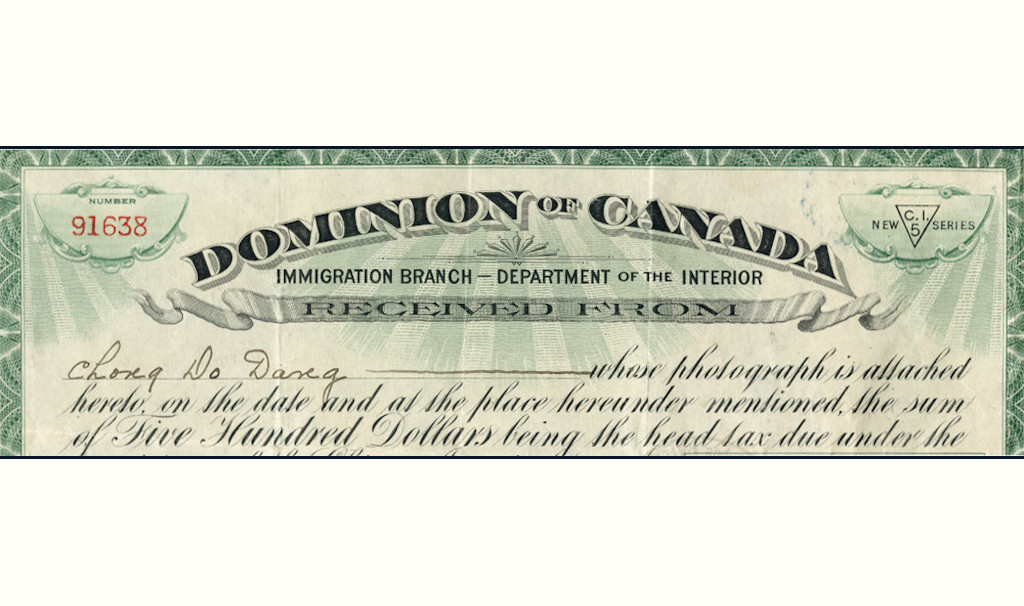Refugee Crisis
The horrific situation for refugees trying to find a haven in Europe has shone a spotlight on Canadian government policy. The tiny number of Syrians allowed to come to Canada calls to mind shameful events in Canada’s past. The refusal to allow the entry of more than a handful of Jews fleeing the Nazis – with deadly consequences for those barred from entry – has echoes today. Then it was racism against the Jews. Today, it seems prejudice is again having tragic consequences.
Canadian government policy has a long history of discrimination, often based on racist or political restrictions.
There are important differences between the processes of moving to Canada as a refugee or as an immigrant. Legally the United Nations’ Refugee Convention established the concept of refugees in 1951. Canada did not sign the convention until 1969, in part out of concerns that the Convention would restrict the government’s ability to deport people, especially Communists. Canada has a history of deporting socialists, union activists and communists as well as unemployed immigrants. During the Depression years of the 1930s, over 30,000 people were deported, including to death in Nazi Germany.
The attitude of Canada’s rulers to refugees has been shaped by their prejudices, politics and fears. These usually shape their actions, although at times such now, public pressure can force a change. Canada took only 5,000 Jewish refugees fleeing the Nazis between 1933 and 1945, a blatantly racist policy. The Canadian government was reluctant to allow in Chileans, mainly socialists, fleeing the military dictatorship after 1973. In contrast, between 1975 and 1985, Canada admitted 110,000 Vietnamese refugees. Today refugees trying to escape the horror of the Middle East – in large part caused by the Western wars and bombing – find it difficult to get to Canada. After 4 years of civil war in Syria, Canada has accepted less than 2,500 refugees from there, with tragic consequences.
However, the policies of the Conservatives have a consistent pattern. Gaining permanent entry into Canada is becoming more restricted, with priority to those with money and some specific skills. Over the last 5 years, Canada has accepted under 25,000 refugees a year – this out of worldwide refugee population of 59.5 million. Of those accepted, nearly 20% came from 3 countries – Hungary, China and Columbia. In 2014, Canada admitted 12,300 refugees from overseas.
Many of the immigrants who came to Canada in the past would now qualify as refugees, they were fleeing dispossession, repression, persecution or famine. Whether people arrive as refugees or immigrants, their goal is resident status in Canada, an important milestone on the often long and painful journey to a new life.
Immigration
To put it in the simplest of terms, immigration is the process of moving to live in a different country than a person’s homeland. Leaving your home, family and the place you grew up to move to a strange new land with different language and culture and facing discrimination and prejudice is not an easy move. Canada has seen massive immigration; almost all Canadians today are either immigrants themselves, or descendants of immigrants – over 95% of the total population. Currently, over 20% of Canada’s population is foreign born, the highest among G8 countries.
In historic times, most people came to Canada to escape poverty, oppression, dispossession and persecution. As capitalism was introduced into countries, large numbers of people were driven from their land and reduced to poverty and starvation. Fleeing to Canada, each first generation usually faced hard work and discrimination. They worked to turn the forests and prairie into farms, and in factories, mines, logging and construction. They also did, and do, organize to support each other, resist oppression and seek solidarity with the existing settlers, including helping to build unions and progressive organizations.
Canada was not an empty land. The indigenous peoples had established a diversity of cultures and technologies all across the continent. The immigrants, disposed from their homelands by capitalism, were used to dispossess the indigenous peoples and introduce capitalism to Canada.
Waves of Immigrants
Immigration to Canada has happened in waves, starting with the French settlement of Quebec, between 1608 and 1760. This was followed by an influx of British Loyalists who fled the independent United States after the end of the American Revolution in the 1780s.
As Britain industrialized and agriculture was transformed, between 1815 and 1850 (mostly between 1830 and 1850), some 800,000 immigrants came to Canada from the British Isles. This included the Highland Scots driven from their homes in the Clearances as their clan chiefs converted the highlands from communally-owned subsistence agriculture to private property and sheep raising. The Irish were driven out by famine and changing farming methods.
Both Irish and Highland Scots sailed across the Atlantic in the ‘coffin ships’, in dreadful conditions with 30% mortality rates, a higher death rate than many slave ships. After all slaves had a value while the starving poor had none. Once landed in Canada, these immigrants faced further discrimination and suffering. In 1832, cholera broke out in Montréal. In the crowded slums of Montreal some 4,000 people died out of a population of 28,000 – one in seven people died. Yet still they fled the suffering at home. In 1847 alone, 100,000 Irish landed in Quebec.
After Canada was established and the railway was completed further waves of immigrants came, enticed by the offer of Homestead land, increasingly from continental Europe rather than just from the British Isles. Mostly they were fleeing hunger and oppression. One example is Ukrainian immigration of some 180,000 people between 1892 to 1914. They fled national oppression, as Ukraine was ruled by the Russian and Austrian empires, and loss of their land. Life in Canada was hard, some were simply dumped from the railways onto the prairie lands – many starved to death. During WWI some 5,000 Ukrainians were interned in prison camps (alongside Germans, Austrians and Hungarians), yet 10,000 enlisted in the Canadian army.
In 1913, over 400,000 people immigrated to Canada from all of Europe. This remains the year of the highest immigration. This was the culmination of a mass wave of immigration in the early years of the 20th century.
Racist Laws
While immigrants from Europe faced discrimination, poverty, political repression (especially those with socialist views) and suffering, the position of potential immigrants from Asia was even worse. Canada had a blatant racist immigration policy until after WWII.
Chinese men were brought to Canada to work and die constructing the Canadian Pacific Railway. After the Railway’s completion, these workers were abandoned. The government then introduced a head tax to stop further immigration from China. In 1923 this was replaced by the Chinese Immigration Act which excluded Chinese from entering Canada, until its repeal in 1947.
Another ugly example of the racist policies was the Komagata Maru incident in 1914 where 352 passengers from British India were not allowed entry into the country, although legally both they and Canadians were subjects of the British Empire, as Canadian citizenship did not exist until 1947. When the failed immigrants returned to India they were attacked by police, who killed 19 of them.
The history of immigration to Canada is filled with racist, and religious, intolerance. Each new wave of immigrants had to endure discrimination from the existing settlers. The Irish faced discrimination, initially the southern and Eastern Europeans were not considered ‘white’ enough. Immigration from Asia was virtually non-existent and those who did make it to Canada (there were small Chinese and Japanese communities) faced huge barriers, and attacks from the state and racist mobs.
It was only after World War II that official racist immigration policies were discarded. Since the 1970s, a large number of people have arrived from south and East Asian countries, as well as continued immigration from other parts of the world. While the racist controls have been removed, these recent immigrants still face racism and discrimination. There has also been increasing demands for documentation, paperwork and forms. This is in contrast to many earlier immigrants who came without papers. Immigration has become far more strictly controlled and bureaucratic.
But despite having one of the largest immigrant populations in the world, all is not well.
Recent Mounting Restrictions
While reforms in the last four or five decades has made immigrating to Canada easier for people of non-European descent, Canada’s immigration policy over the last few years has taken a turn for the worst. File processing backlogs at the federal immigration department, Citizenship and Immigration Canada, have reached staggering levels leaving thousands of families without the legal right to work and no access to public health care. Spouses are forced to live separately in different countries simply because the timeline to process a file has tripled. As an example, the processing time for an Inland Canada spousal application was 7 months in October 2013. Currently it stands at 26 months. Problems in Canada’s immigration policy are further highlighted by the Migrant Integration Policy Index released in June 2015 – Canada scored 68 out of a possible 100 points for 2014 which is a 4 point decline from the score of 72 it received in 2011. This dropped Canada out of the top five countries in integrating immigrants.
The recent legislation of Bills C-24 and C-51 are further attacks on immigrants. There is considerable overlap between the two Bills. C-24, the dual citizenship bill, gives the government the power to strip Canadians off their citizenship. Canadian nationals with dual citizenship or Canadians who are eligible for dual citizenship (even if they never intend to apply for dual citizenship) are now second class Canadian Citizens because they can face sanctions which are not applicable to Canadians with a single citizenship.
If the consequences of C-24 were not suffocating enough, Bill C- 51 gives the government sweeping rights to spy on its own citizens. C-51 fails to protect the safety and privacy of Canadians, for it grants unprecedented and excessive powers to government departments and agencies. It could be used to target environmental, aboriginal and labour activists, or any other form of protest, incredibly, without an official permit, court order or legal support. It implies that advocating terrorism, even when there is no intent to commit a crime or commit a violent offense, is a crime. Police will have the power to detain anyone they suspect of being a terrorist without the need to prove that someone was going to commit a crime. Federal departments will also be able to share an individual’s personal information and spy agencies can breach people’s privacy and freedom of expression. Both laws are as heavy handed, as they are vague.
Since the 1990s, immigration levels have been between 200,000 – 250,000 a year. It is imperative to recognize the omnipresent role of class conflict in the whole situation, where instead of taking the poor and disposed, the current trend focuses on rich capitalists and highly skilled people. It is becoming increasingly difficult for poor people with every passing year. Immigration through family reunification, a basic human right, has become more difficult and processing times have increased. The changes in policy are starkly demonstrated by the Temporary Foreign Worker Plan, use of which has trebled in last decade, and has seen an influx of half a million workers between 2006 and 2013. The Canadian residency of a temporary foreign worker is strictly tied to an employer, who is free to abuse her/ him as cheap labour with grotesquely limited rights. This is especially true for Live-in caregivers – a program wide open to abuse.
If Canada’s immigration system was broken across the board, it would be understandable. However, this is not the case, since rich capitalists from abroad have no difficulty in entering the country. The requirement in this regard is simple – have a net worth of $1,600,000 and you are good to go. A much smoother process than that faced by working class people who need to go through a tirade of bureaucratic procedures before they are even deemed eligible for entry. This reflects a worrying trend, but one that is in line with the current right-wing government of Stephen Harper.
It would be extremely harsh to say that Canada’s immigration policy is racist, but the right-wing inclination of consecutive Canadian governments does not make for pretty reading. While racism is not as blatant as in the past, inequality and economic hardship among immigrants is. The Conservative’s government capitalist policies are not only alienating the working class at home, they are making life difficult for immigrants to the country too, and this unfortunate list almost exclusively includes those who do not have the big money to ‘buy’ their entry into Canada. Present policies definitely discriminate against low and middle income people and does have racist undertones.
Immigration is rising across the world due to poverty, loss of land, war and environmental destruction. The actions of the Canadian government and businesses contribute to these underlying causes. Canada needs to integrate policies and laws which make things easier for people wishing to move here. Not policies that make a broken system even more impossible to get through. Instead of focusing on anti-terror laws, the focus should be on policies that help new immigrants to settle into their adopted homeland.
A Solution
Skilled workers and trained professionals, who often spent years gaining their skills, immigrating to Canada, should have their qualifications recognized rather than being forced into low paid jobs. Their skills and knowledge, if they were allowed to put them to use, would benefit all of Canadian society. People who move to Canada for a better life for their families and future generations should not be punished. They need support to become full members of Canadian society on all socio-political and economic levels, irrespective of country of origin, race, religion or creed. This IS a human right and it needs to be respected.
Rather than allow Canadian bosses to divide and rule between descendents of past immigrants and recent immigrants, as well as the indigenous peoples, we need to build unity of all Canadian workers, students and poor people against the rule of the elite.
Socialist Alternative Canada fights for equal rights to all. This includes but is not limited to:
• Government training to learn fluent French or English
• The availability of full rights of asylum
• Equal rights for all immigrants regardless of their present status
• Acceptance in Canada of qualifications gained abroad – with government-funded upgrading courses if needed
• Justice and solidarity among workers, whether migrants or Canadian. End cheap labour with full labour, human, and citizenship rights for all workers in Canada




